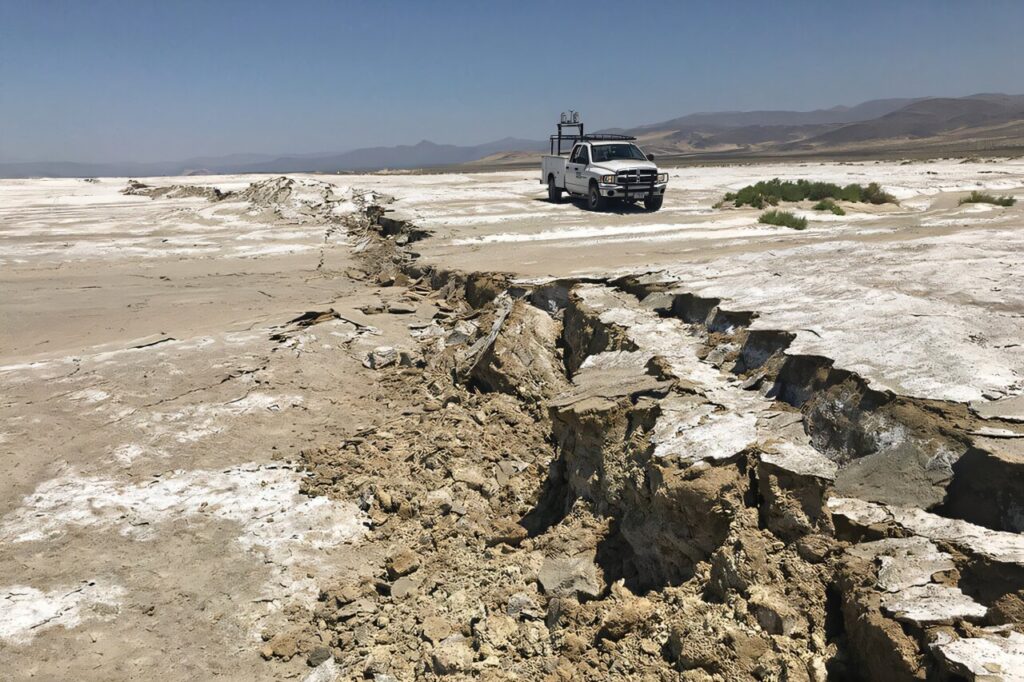
Earthquakes are often synonymous with immediate destruction, conjuring images of cracked earth and altered landscapes. Yet, the aftermath of an earthquake is marked by a period of post-seismic deformation, where areas that initially remained intact experience new stress due to sudden environmental changes. This phase eventually leads to a state of recovery. However, a recent study by MIT researchers, published in the journal Science, reveals that this recovery process is not as straightforward as previously believed.
Traditionally, geologists have assumed that the recovery period following an earthquake is a smooth and continuous process. However, the MIT study finds that while healing occurs rapidly at shallow depths—approximately above 10 kilometers—deeper depths recover much more slowly, if at all.
“If you were to look before and after in the shallow crust, you wouldn’t see any permanent change. But there’s this very permanent change that persists in the mid-crust,” says Jared Bryan, a graduate student in the MIT Department of Earth, Atmospheric and Planetary Sciences (EAPS) and lead author of the study.
Insights from the Ridgecrest Earthquakes
The research team, including EAPS Professor William Frank and Pascal Audet from the University of Ottawa, focused on seismic data from the 2019 Ridgecrest earthquakes in California. This immature fault zone experienced the largest earthquake in the state in two decades, followed by tens of thousands of aftershocks over the subsequent year. By removing seismic data generated by the earthquake sequence, the researchers analyzed waves from other global seismic activities to observe changes in their paths through the Earth before and after the sequence.
Using ambient noise from sources like ocean waves and traffic, captured by seismometers, the team applied a technique known as a receiver function. This allowed them to track the speed of seismic waves and how they changed due to variations in rock density and porosity, akin to how sonar detects changes in acoustic waves when they interact with objects. This approach enabled the creation of basic maps of the Earth’s structure around the Ridgecrest fault zone before and after the seismic events.
The findings revealed that the shallow crust, extending about 10 kilometers into the Earth, recovered within a few months. In contrast, deeper depths in the mid-crust did not exhibit immediate damage but changed over the same timescale as the shallow depths recovered.
“What was surprising is that the healing in the shallow crust was so quick, and then you have this complementary accumulation occurring, not at the time of the earthquake, but instead over the post-seismic phase,” says Bryan.
The Energy Budget and Seismic Recovery
Understanding how recovery unfolds at various depths is crucial for determining how energy is allocated during different phases of the seismic process. This includes the release of energy as waves, the formation of new fractures, or energy being stored elastically in surrounding areas. Collectively known as the energy budget, this concept is vital for comprehending how damage accumulates and recovers over time.
However, the timescales at which deeper depths recover, if at all, remain uncertain. The study presents two possible scenarios: one where the deep crust recovers over a much longer timescale than observed, or another where it never recovers at all.
“Either of those are not what we expected,” says Frank. “And both of them are interesting.”
Future Research and Implications
Further research is necessary to gather more observations and develop a more detailed picture of where the change becomes more pronounced at depth. Bryan also aims to investigate other areas, such as more mature faults that experience higher levels of seismic activity, to determine if these factors alter the results.
“We’ll let you know in 1,000 years whether it’s recovered,” Bryan humorously remarks.
This study not only challenges existing geological assumptions but also opens new avenues for understanding seismic activity and its long-term effects on Earth’s crust. As researchers continue to explore these phenomena, the findings could have significant implications for earthquake preparedness and mitigation strategies worldwide.







